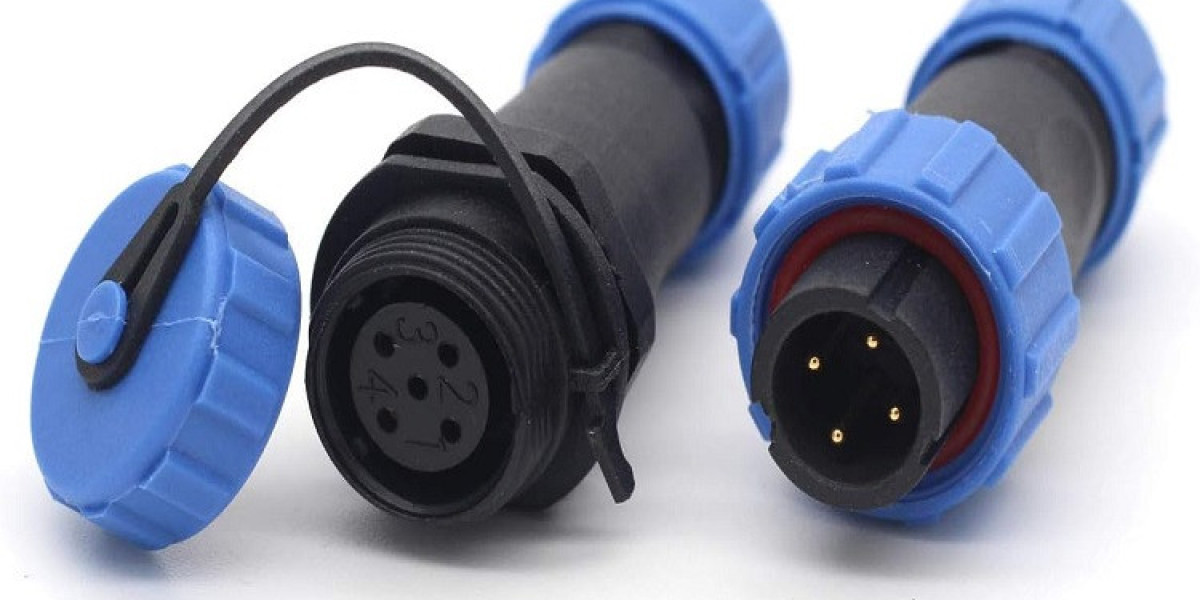According to a recent report by TechSci Research titled “Aviation Connectors Market - Global Industry Size, Share, Trends, Competition Forecast & Opportunities, 2030F,” the global aviation connectors market was valued at USD 5.75 billion in 2024 and is projected to reach USD 7.62 billion by 2030, expanding at a CAGR of 4.8% during the forecast period. This steady growth reflects the aviation industry's increasing reliance on advanced electronics, rising demand for lightweight yet durable components, and continued innovation in aircraft design and systems.
Aviation connectors are essential components that facilitate the transmission of power, signal, and data within aircraft systems. As aircraft become more technologically sophisticated, connectors must meet rising performance standards while enduring harsh operating conditions such as extreme temperatures, vibrations, and pressure variations.
Growth Drivers
One of the primary factors driving the aviation connectors market is the surge in global air travel, fueled by economic development, a growing middle class, and increasing airline connectivity. To meet growing passenger demand, airlines worldwide are expanding and upgrading their fleets, incorporating more advanced aircraft with state-of-the-art avionics and communication systems that rely heavily on robust, high-performance connectors.
Another major driver is the technological evolution of aircraft systems. Modern aircraft—whether commercial jets, military planes, or unmanned aerial vehicles (UAVs)—are increasingly dependent on electronic systems for navigation, communication, engine control, and environmental monitoring. This growing reliance necessitates specialized connectors that can ensure stable, efficient, and safe system operation.
The emergence of electric and hybrid-electric aircraft is further shaping the market landscape. These next-generation aircraft require sophisticated electrical systems for propulsion and power management, placing even greater demand on connectors that offer high current-carrying capabilities, minimal signal interference, and superior durability.
Additionally, the increasing integration of lightweight composite materials and smart systems in aircraft design necessitates connectors that can withstand mechanical stress while minimizing overall aircraft weight—crucial for improving fuel efficiency and reducing emissions.
Market Challenges
Despite the promising outlook, the aviation connectors market faces several hurdles. Stringent regulatory and certification requirements slow down product development and introduce added complexity in market entry, especially for new or smaller players. Aviation components, including connectors, must meet rigorous safety and quality standards set by regulatory bodies such as the FAA, EASA, and others.
Supply chain disruptions—including shortages in critical raw materials such as rare earth metals and semiconductors—pose another challenge. These shortages can delay manufacturing timelines, increase costs, and strain relationships across the aviation supply chain.
Additionally, intense competition and cost pressures—especially in the commercial aviation segment—make it difficult for manufacturers to balance innovation and affordability. OEMs and suppliers are under constant pressure to reduce costs while delivering increasingly sophisticated components.
Nonetheless, the retrofitting and modernization of legacy aircraft systems presents an opportunity for market players. Airlines and defense organizations continue to invest in upgrading older aircraft with advanced electronics and efficient connectors to extend service life, enhance performance, and meet evolving regulatory standards.
Browse over XX market data Figures spread through XX Pages and an in-depth TOC on "Global Aviation Connectors Market.”
https://www.techsciresearch.com/report/aviation-connectors-market/27434.html
Market Segmentation
The Aviation Connectors Market is segmented by type, application, platform, and region.
By Application: Engine Control Systems Lead Growth
Among applications, engine control systems represent the fastest-growing segment. This surge is attributed to the complexity and precision required in managing modern aircraft engines. These systems must function reliably under extreme conditions, and their performance directly impacts fuel efficiency, emissions, and flight safety. Connectors used in engine control must resist heat, vibrations, and corrosive environments, making their design and performance critical.
The rise in electric and hybrid-electric propulsion technologies further accelerates demand for advanced connectors in engine control systems. These aircraft use intricate electrical powertrains that require seamless power and data transmission, making highly specialized connectors essential for proper function.
Additionally, international regulatory efforts to curb aviation emissions have prompted significant investments in cleaner engine technologies, creating further momentum for connector innovation in this segment.
By Region: Asia-Pacific Shows Strongest Growth
Asia-Pacific stands out as the fastest-growing regional market for aviation connectors. The region is witnessing robust growth in both the commercial and defense aviation sectors. Economies such as India, China, and countries in Southeast Asia are experiencing increased air passenger traffic, prompting airlines to expand and modernize their fleets with advanced aircraft.
Governments in Asia-Pacific are also investing heavily in defense modernization, fostering domestic aircraft production and upgrading existing military platforms. Countries like China and India are prioritizing indigenous manufacturing of aviation systems and components, thereby boosting demand for locally sourced or co-developed aviation connectors.
Moreover, the push toward sustainable aviation is gaining ground across Asia-Pacific. This includes the development of fuel-efficient aircraft and the adoption of energy-saving technologies—all of which require lightweight, environmentally friendly connector solutions. As a result, many global connector manufacturers are collaborating with regional players to tap into this growing market and customize solutions to local needs.
Conclusion
The global aviation connectors market is positioned for steady and resilient growth, underpinned by technological advancements, rising aircraft deliveries, and the transition toward electric and digital aviation platforms. While the market does face regulatory and supply chain challenges, opportunities lie in modernization efforts, increased defense spending, and the accelerating push for sustainability across the aviation industry.
As aircraft systems continue to become more complex and data-intensive, aviation connectors will remain at the forefront of enabling safe, efficient, and intelligent flight operations—cementing their role as a vital component of the aerospace ecosystem.
Major companies operating in the global aviation connectors market are:
Amphenol Corporation
TE Connectivity plc
Carlisle Interconnect Technologies
Esterline Corporation
Bel Fuse Inc.
Eaton Corporation plc
ITT Corporation
Smiths Group plc
Radiall S.A.
Rosenberger Hochfrequenztechnik GmbH & Co. KG
Download Free Sample Report
https://www.techsciresearch.com/sample-report.aspx?cid=27434
Customers can also request 10% free customization in this report.
“A key trend in the aviation connectors market is manufacturers are focusing on developing connectors tailored to specific operational environments, such as extreme temperatures, vibration, and pressure variations. This customization aligns with the increasing complexity of modern aircraft systems. “Said Mr. Karan Chechi, Research Director of TechSci Research, a research-based management consulting firm.
Aviation Connectors Market – Global Industry Size, Share, Trends, Opportunity, and Forecast, Segmented By Type (PCB, Fiber Optic, High Power, High Speed, RF Connectors, Others), By Application (Landing Gear, Avionics, Cabin Equipment, Engine Control Systems, Others), By Platform (Fixed Wing, Rotary Wing), By Region, & Competition, 2020-2030F”, has evaluated the future growth potential of global aviation connectors market and provides statistics & information on market size, structure and future market growth. The report intends to provide cutting-edge market intelligence and help decision makers take sound investment decisions. Besides, the report also identifies and analyzes the emerging trends along with essential drivers, challenges, and opportunities in the global aviation connectors market.
Contact Us-
TechSci Research LLC
420 Lexington Avenue, Suite 300,
New York, United States- 10170
M: +13322586602
Email: [email protected]
Website: www.techsciresearch.com








